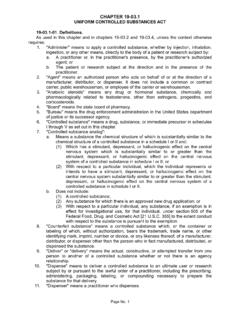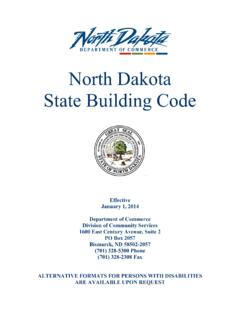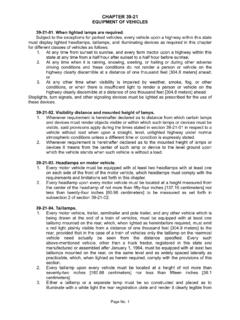Transcription of Sample Size Calculation - University of North Dakota
1 Sample size Calculation with GPowerDr. Mark Williamson, StatisticianBiostatistics, Epidemiolog y, and Research Design Core DaCCoTAPurpose This Module was created to provide instruction and examples on Sample size calculations for a variety of statistical tests on behalf of BERDC The software used is GPower, the premiere free software for Sample size Calculation that can be used in Mac or The Biostatistics, Epidemiology, and Research Design Core (BERDC) is a component of the DaCCoTAprogram Dakota Cancer Collaborative on Translational Activity has as its goal to bring together researchers and clinicians with diverse experience from across the region to develop unique and innovative means of combating cancer in North and South Dakota If you use this Module for research, please reference the DaCCoTAprojectThe Why of Sample size Calculation In designing an experiment, a key question is:How many animals/subjects do I need for my experiment?
2 Too small of a Sample size can under-detect the effect of interest in your experiment Too large of a Sample size may lead to unnecessary wasting of resources and animals Like Goldilocks, we want our Sample size to be just right The answer: Sample size Calculation Goal: We strive to have enough samples to reasonably detect an effect if it really is there without wasting limited resources on too many Bits of Sample size CalculationEffect size :magnitude of the effect under the alternative hypothesis The larger the effect size , the easier it is to detect an effect and require fewer samplesPower: probability of correctly rejecting the null hypothesis if it is false AKA, probability of detecting a true difference when it exists Power = 1- , where is the probability of a Type II error (false negative) The higher the power, the more likely it is to detect an effect if it is present and the more samples needed Standard setting for power is level ( ).
3 Probability of falsely rejecting the null hypothesis even though it is true AKA, probability of a Type I error (false positive) The lower the significance level, the more likely it is to avoid a false positive and the more samples needed Standard setting for is Given those three bits, and other information based on the specific design, you can calculate Sample size for most statistical size in detail While Powerand Significance level are usually set irrespective of the data, the effect size is a property of the Sample data It is essentially a function of the difference between the means of the null and alternative hypotheses over the variation (standard deviation) in the data How to estimate Effect background information in the form of preliminary/trial data to get means and variation, then calculate effect size background information in the form of similar studies to get means and variation, then calculate effect size no prior information, make an estimated guess on the effect size expected, or use an effect size that corresponds to the size of the effect Broad effect sizes categories are small, medium, and large Different statistical tests will have different values of effect size for each category 1 2.
4 Statistical Rules of the GameHere are a few pieces of terminology to refresh yourself with before embarking on calculating Sample size : Null Hypothesis (H0): default or boring state; your statistical test is run to either Reject or Fail to Reject the Null Alternative Hypothesis (H1): alternative state; usually what your experiment is interested in retaining over the Null One-Tailed Test:looking for a deviation from the H0 in only one direction (ex: Is variable X larger than 0?) Two-tailed Test: looking for a deviation from the H0 in either direction (ex: Is variable Y different from 0?) Parametric data: approximately fits a normal distribution; needed for many statistical tests Non-parametric data: does not fit a normal distribution; alternative and less powerful tests available Paired (dependent) data: categories are related to one another (often result of before/after situations) Un-paired (independent) data: categories are not related to one another Dependent Variable:Depends on other variables; the variable the experimenter cares about; also known as the Y or response variable Independent Variable:Does not depend on other variables; usually set by the experimenter.
5 Also known as the X or predictor variableUsing GPower: Basics Download for Mac or PC Three basic steps: Select appropriate test: Input parameters Determine effect size (can use background info or guess) For situations when you have some idea of parameters such as mean, standard deviation, etc., I will refer to this as having Background Information If not, I will refer to this as Na ve Using GPower: Graphics Central and noncentral distributions Shows the distribution of the null hypothesis (red) and the alternative (blue) Also has the critical values X-Y plot for a range of values Can generate plots of one of the parameters , effect size , power and Sample size , depending on a range of values of the remaining parameters. Taxonomy of Designs Covered 1 Numerical Parametric: One mean T-test Non-parametric: One mean Wilcoxon Test 1 Numerical + 1 Categorical Categorical groups=2: Independent (non-paired): Parametric: Two means T-test Non-parametric: Mann-Whitney Test Dependent (paired): Parametric: Paired T-test Non-Parametric: Paired Wilcoxon Test Categorical groups>2: Independent (non-paired): Parametric:One-way ANOVA Non-Parametric:Kruskal Wallace Test Dependent (paired): Parametric:Repeated Measures ANOVA Non-Parametric:Friedman Test 1 Numerical + 2+Categorical Single Category of Interest: Multi-Way ANOVAB locked ANOVAN ested ANOVAS plit-Plot ANOVA Multiple Categories of Interest: Multi-Way ANOVA 1 Categorical.
6 Proportion Test 1 Categorical + 1 Categorical Independent (non-paired): Fisher s Exact Test Dependent (paired): McNamar sTest 1 Categorical + 1+Categorical Categorical groups 2: Goodness-of-Fit Test 1 Numerical + 1 Numerical Parametric: Simple Linear Regression Non-parametric: Spearman Rank-order Regression 1 Numerical + 2+Numerical Parametric: Multiple Linear Regression Non-Parametric: Logisticand Poisson Regression 1 Numerical + 1+Numerical + 1+Categorical: Only 1 Category of Interest:ANCOVA Multiple Categories of Interest: {GLMM}#Name of TestNumeric. Var(s)Cat. Var(s)Cat. Var Group #Cat Var. # of InterestParametricPaired1 One Mean T-test1000 YesN/A2 One Mean Wilcoxon Test1000 NoN/A3 Two Means T-test1121 YesNo4 Mann-Whitney Test1121 NoNo5 Paired T-test1121 YesYes6 Paired Wilcoxon Test1121 NoYes7 One-way ANOVA11>21 YesNo8 Kruskal Wallace Test11>21 NoNo9 Repeated Measures ANOVA11>21 YesYes10 Friedman Test11>21 NoYes11 Multi-way ANOVA (1 Category of interest)1 2 21 YesNo12 Multi-way ANOVA (>1 Category of interest)1 2 2>1 YesNo13 Proportions Test0121N/AN/A14 Fisher s Exact Test0222N/ANo15 McNemar s Test0222N/AYes16 Goodness-of-Fit Test0 1 21N/ANo17 Simple Linear Regression20N/AN/AYesN/A18 Multiple Linear Regression>20N/AN/AYesN/A19 Pearson s Correlation21N/AN/AYesNo20 Non-Parametric Regression (Logistic)
7 20N/AN/ANoN/A21 Non-Parametric Regression (Poisson) 20N/AN/ANoN/A22 ANCOVA>1 1>1 1 YesN/AFormat for each testOverviewExample{Parameter Calculations}PracticeAnswersOne Mean T-Test: OverviewDescription: this tests if a Sample mean is any different from a set value for a normally distributed : Is the average body temperature of college students any different from F? H0= F, H1 FGPower: Select t tests from Test family Select Means: difference from constant (one Sample case) from Statistical test Select A priorifrom Type of power analysis Background Info:a)Select Oneor Twofrom the Tail(s), depending on typeb)Enter in err prob box or a specific you want for your studyc)Enter in Power (1- err prob) box -or a specific poweryou want for your studyd)Hit Determine =>e)Enter in the Mean H0, Mean HI, and SD, then hit Calculate and transfer to main window (this will calculate effect size and add it to the Input Parameters)f)Hit Calculate on the main windowg)Find Total Sample sizein the Output Parameters Na ve.
8 A)Run a-c as aboveb)Enter Effect size guess in the Effect size d box (small= , medium= , large= )c)Hit Calculate on the main windowd)Find Total Sample sizein the Output ParametersNumeric. Var(s)Cat. Var(s)Cat. Var Group #Cat Var. # of InterestParametricPaired1000 YesN/AOne Mean T-Test: ExampleIs the average body temperature of college students any different from F? H0= F, H1 F From a trial study, you found the mean temperature to be with a standard deviation of Selected Two-tailed, because we were asking if temp differed, not whether it was simply lower or higherResults: Total number of samples needed is menu items you specifiedValues you enteredValue(s) GPowercalculatedSample size calculationOne Mean T-Test: PracticeCalculate the Sample size for the following scenarios (with = , and power= ) are interested in determining if the average income of college freshman is less than $20,000.
9 You collect trial data and find that the mean income was $14,500 (SD=6000). are interested in determining if the average sleep time change in a year for college freshman is different from zero. You collect the following data of sleep change (in hours). are interested in determining if the average weight change in a year for college freshman is greater than Mean T-Test: AnswersCalculate the Sample size for the following scenarios (with = , and power= ) are interested in determining if the average income of college freshman is less than $20,000. You collect trial data and find that the mean income was $14,500 (SD=6000). Found an effect size of , then used a one-tailed test to get a total Sample size of are interested in determining if the average sleep time change in a year for college freshman is different from zero.
10 You collect the following data of sleep change (in hours). Mean H0=0, Mean H1= with SD= ; found an effect size of then used a two-tailed test to get a total Sample size of are interested in determining if the average weight change in a year for college freshman is greater than zero. Guessed a large effect size ( ), then used a one-tailed test to get a total Sample size of 12 Sleep Mean Wilcoxon: OverviewDescription: this tests if a Sample mean is any different from a set value for a non-normally distributed variableExample: Is the average number of children in Grand Forks families greater than 1? H0=1 child, H1>1 childGPower: Select t tests from Test family Select Means: Wilcoxon signed-rank test (one Sample case) from Statistical test Select A priorifrom Type of power analysis Background Info:a)Select Oneor Twofrom the Tail(s), depending on typeb)Select Parent Distribution (Laplace, Logistic, ormin ARE) depending on variable (min ARE is good default if you don t know for sure)c)Enter in err prob box or a specific you want for your studyd)Enter in Power (1- err prob) box -or a specific poweryou want for your studye)Hit D
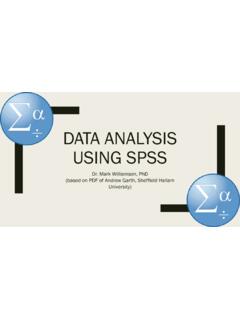

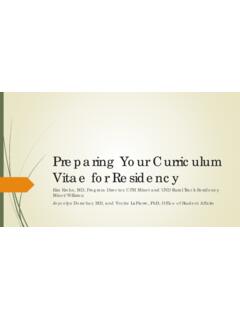
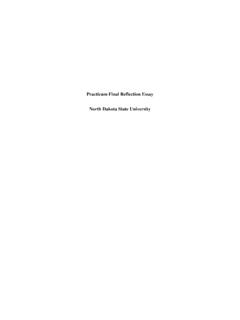
![BCA160 Macrame [2015] - North Dakota State University](/cache/preview/a/a/f/9/7/9/5/e/thumb-aaf9795e3911f0cd6b61ff29c8d644fb.jpg)


